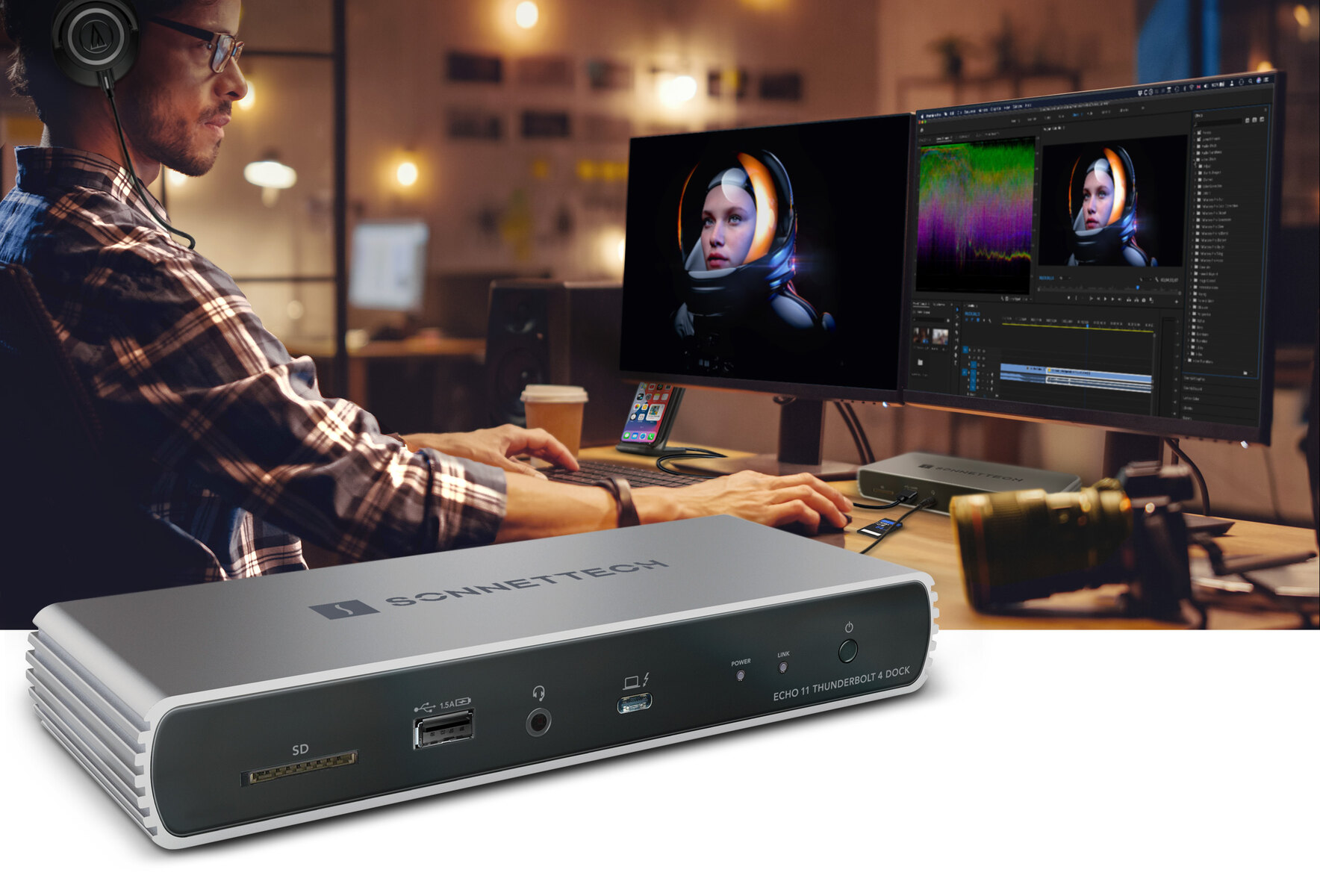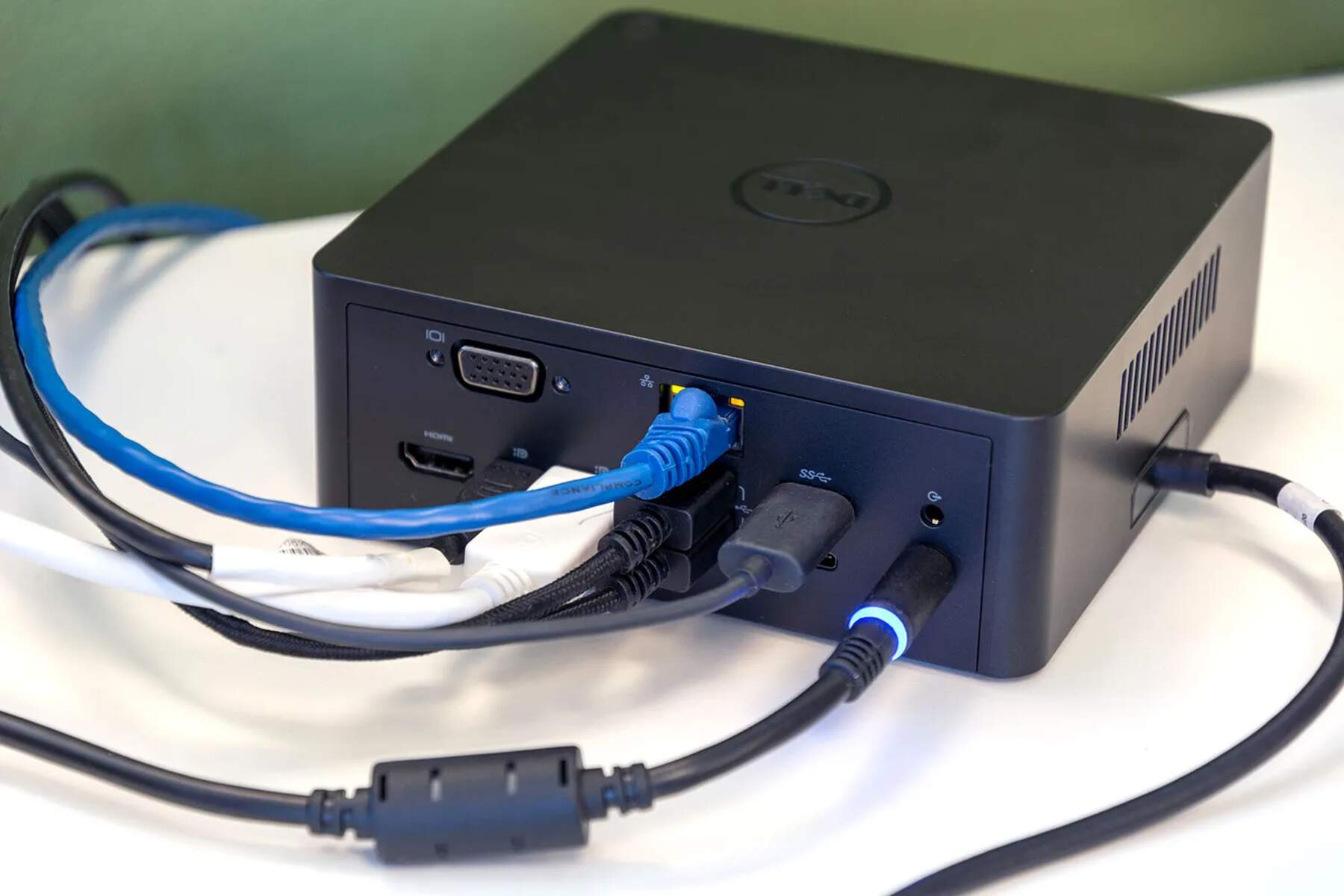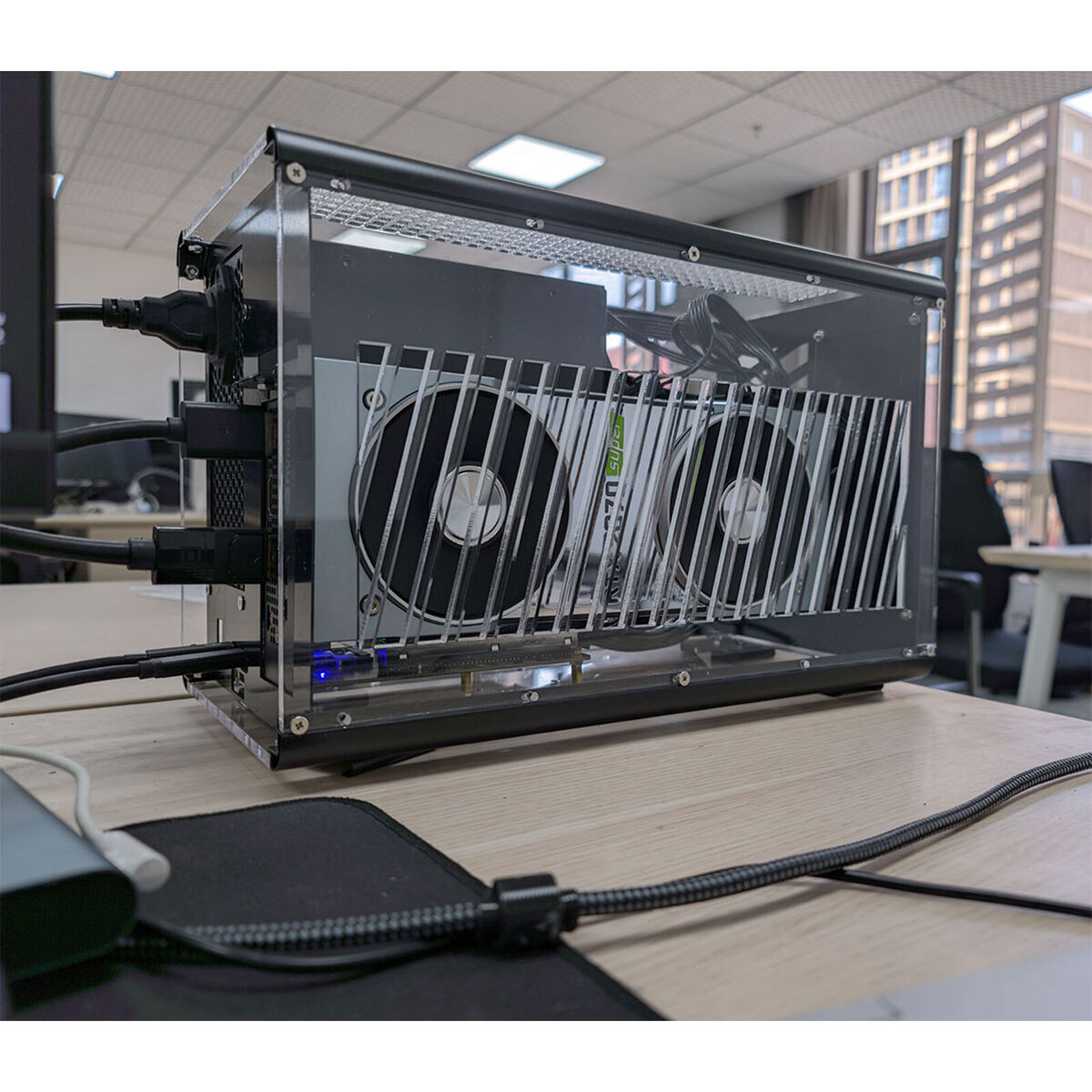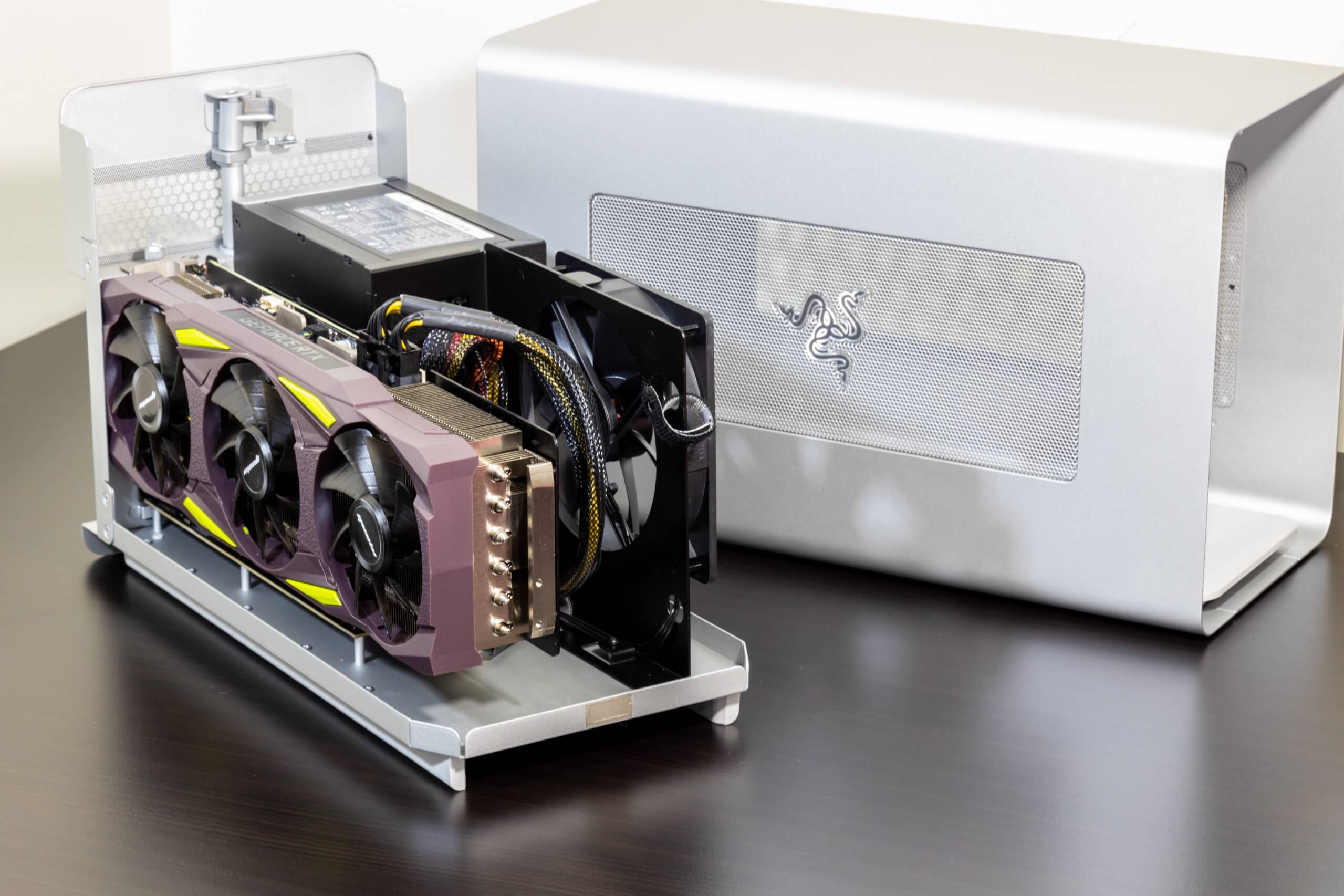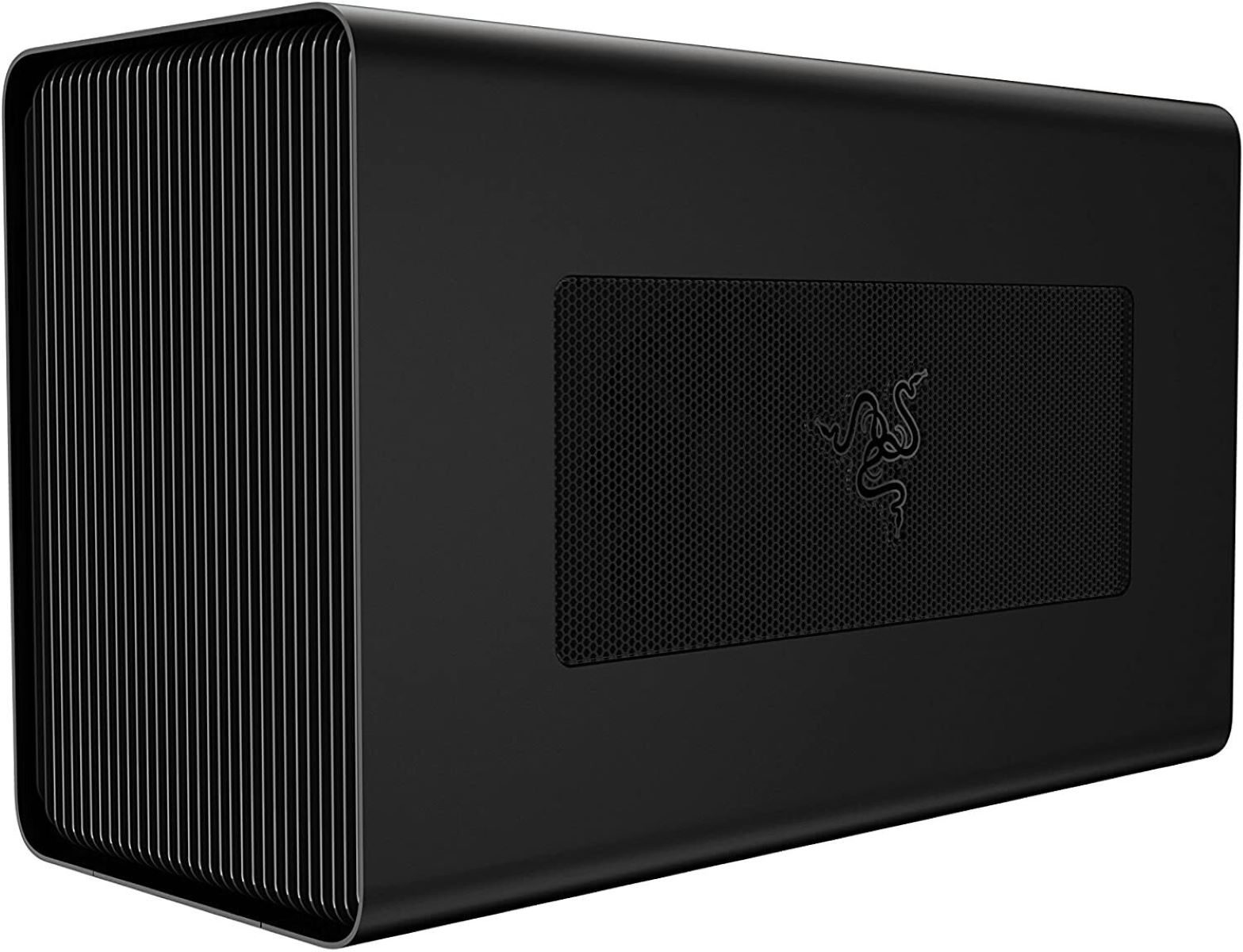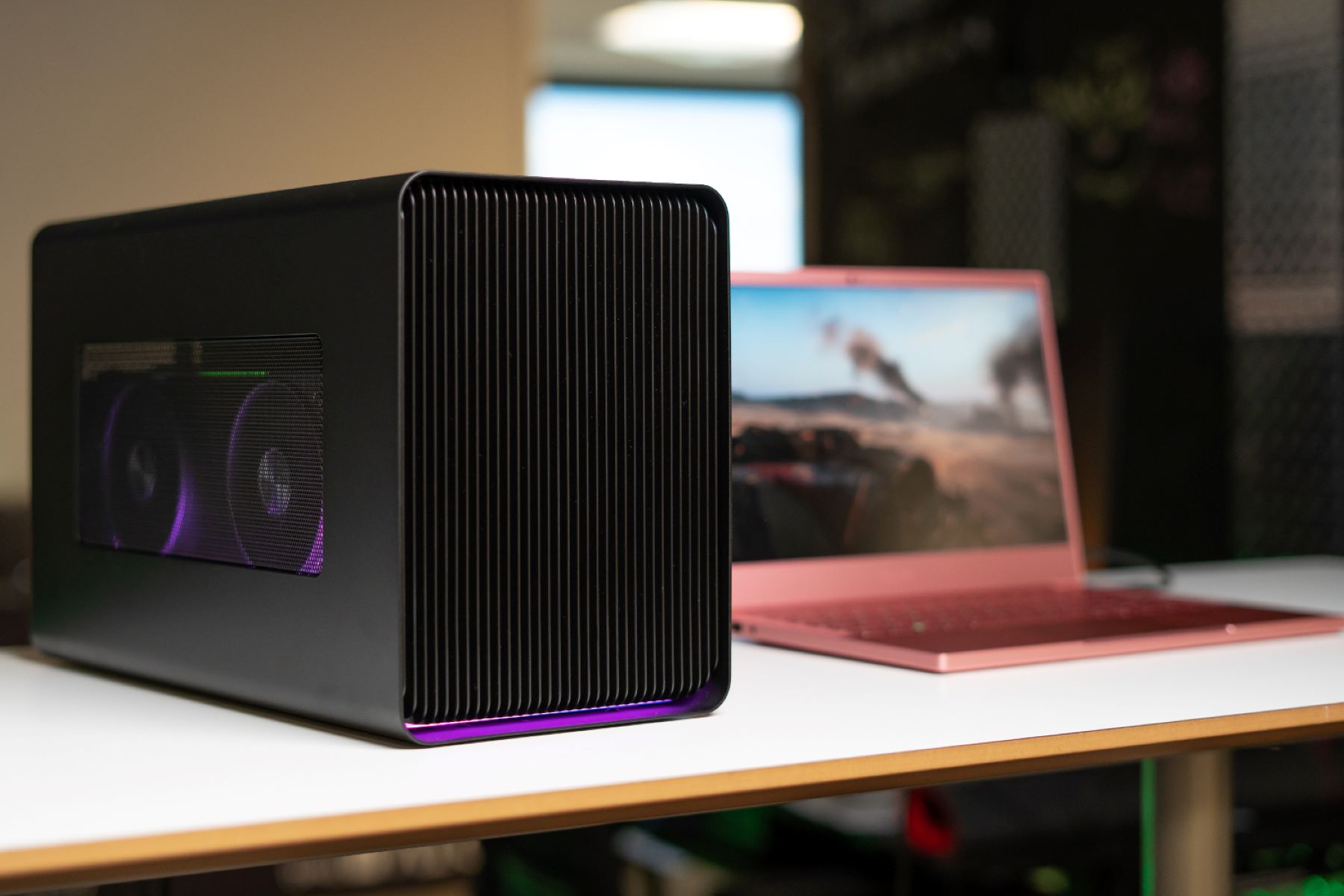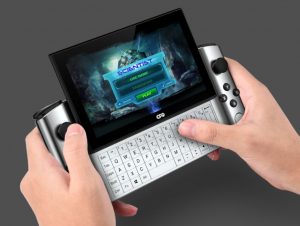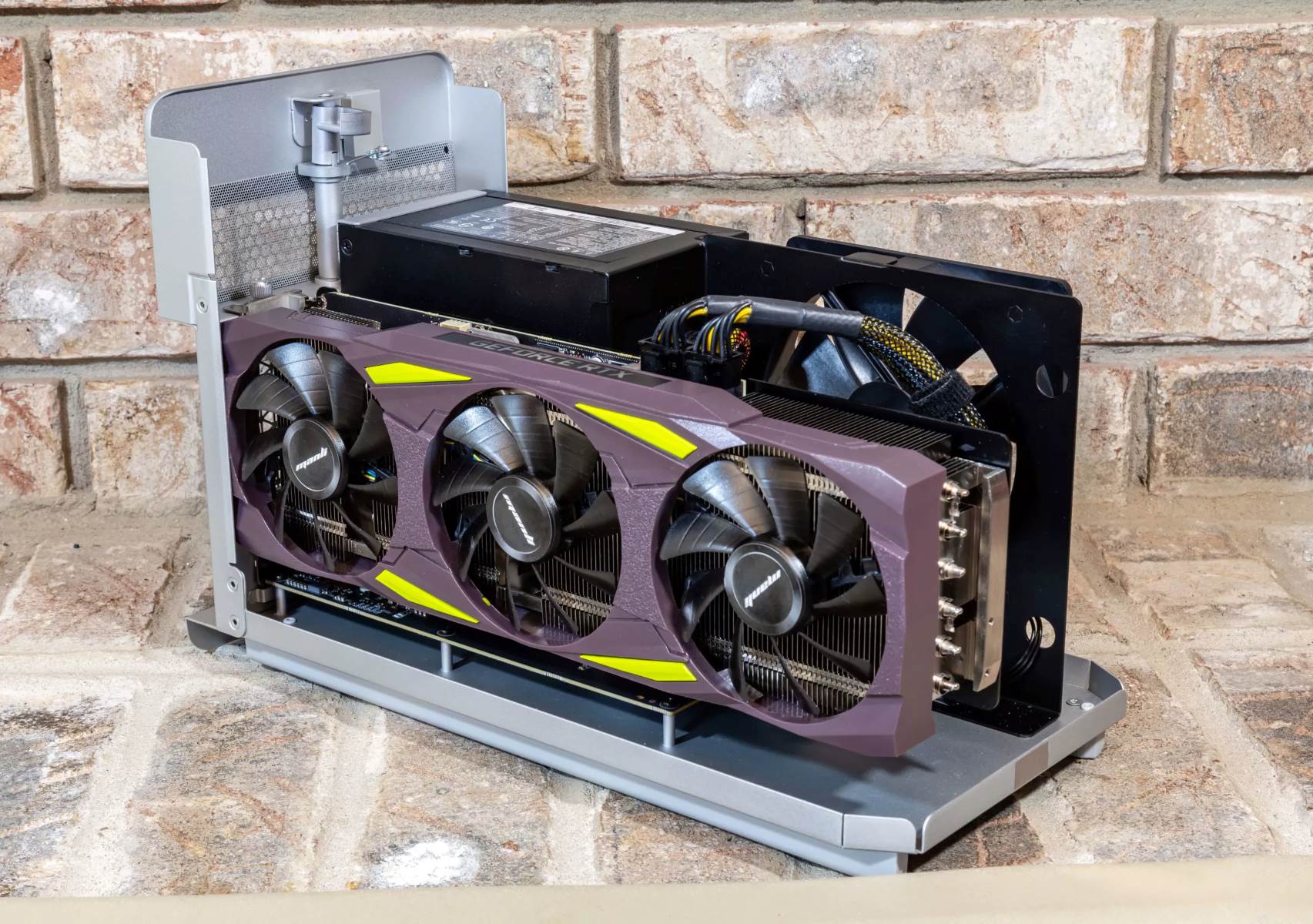Introduction
When it comes to powering your PC, you may think of traditional methods like using a power outlet or a battery backup. However, there is another innovative solution that offers convenience and flexibility – a Thunderbolt dock.
A Thunderbolt dock is a versatile device that connects to your computer via a Thunderbolt port. It provides a range of ports and functions, including power delivery, data transfer, and video output. By using a Thunderbolt dock, you can simplify your setup, reduce cable clutter, and enhance the performance of your PC.
In this article, we will explore the world of Thunderbolt docks and guide you through the process of powering your PC using one. We will explain the benefits of using a Thunderbolt dock, the requirements for this setup, and provide a step-by-step guide to help you get started. So, whether you’re a power user, a creative professional, or simply looking to streamline your workstation, this article is for you.
Before we dive into the details, it’s important to note that Thunderbolt technology was developed by Intel and Apple. It combines the high-speed capabilities of PCI Express and the versatility of DisplayPort into a single port, allowing for lightning-fast data transfer, video output, and power delivery.
Now that you have a brief introduction to Thunderbolt technology, let’s explore the benefits of using a Thunderbolt dock in the next section.
What is a Thunderbolt Dock?
A Thunderbolt dock is a device that expands the capabilities of your computer by providing a variety of ports and connection options through a single Thunderbolt interface. It acts as a central hub, allowing you to connect multiple devices and peripherals to your computer without the need for separate cables and adapters.
At its core, a Thunderbolt dock connects to your computer using a Thunderbolt port, which is available on many modern laptops and desktops. This connection not only enables high-speed data transfer, but also facilitates power delivery, video output, and audio connectivity.
One of the main advantages of using a Thunderbolt dock is the ability to connect a range of devices simultaneously. These devices can include external monitors, external hard drives, printers, scanners, keyboards, mice, and more. By consolidating your connections into a Thunderbolt dock, you can eliminate the hassle of plugging and unplugging devices every time you need to use them.
Additionally, Thunderbolt docks often come equipped with various types of ports, such as USB-A, USB-C, HDMI, DisplayPort, Ethernet, and audio jacks. This makes it easy to connect devices that require different types of connections, ensuring compatibility and convenience.
Furthermore, many Thunderbolt docks support daisy-chaining, which means you can connect multiple Thunderbolt devices in a chain formation. This allows for even greater expansion possibilities, as you can connect additional docks or other Thunderbolt-enabled devices to further expand your setup.
It’s important to note that Thunderbolt docks come in different sizes and configurations, so you can choose the one that best suits your needs. Some docks are compact and portable, making them ideal for travel or remote work, while others are more robust and geared towards desktop setups.
In the next section, we will explore the benefits of using a Thunderbolt dock in more detail and discuss how it can enhance your computing experience.
Benefits of Using a Thunderbolt Dock
Using a Thunderbolt dock can bring numerous benefits to your computing experience. Let’s explore some of the key advantages:
- Convenience and Flexibility: By connecting all your devices and peripherals to a Thunderbolt dock, you can easily manage your setup with a single connection. This eliminates the need for multiple cables and adapters, reducing cable clutter and simplifying your workspace.
- Expanded Connectivity: Thunderbolt docks offer a wide range of ports, including USB-A, USB-C, HDMI, DisplayPort, Ethernet, and more. This enables you to connect devices with different types of connections, making it versatile and compatible with a variety of peripherals.
- Power Delivery: Many Thunderbolt docks can provide power to your laptop or other devices. This means that you can charge your laptop, smartphone, or tablet directly from the dock, eliminating the need for separate chargers and power outlets.
- Enhanced Productivity: With a Thunderbolt dock, you can connect multiple monitors, creating a multi-display setup that boosts productivity, allowing you to multitask, work on different projects simultaneously, or immerse yourself in a seamless gaming experience.
- High-Speed Data Transfer: Thunderbolt technology offers exceptionally fast data transfer speeds, ensuring rapid file transfers between your computer and connected devices. This is especially beneficial for tasks that involve large files, such as video editing, data backup, or transferring high-resolution images.
- Daisy-Chaining: Thunderbolt docks often support daisy-chaining, allowing you to connect multiple Thunderbolt devices in a chain formation. This enables further expansion possibilities, as you can add more docks or other Thunderbolt-enabled devices to your setup without compromising on performance.
- Future-Proof Connectivity: Thunderbolt docks are built to support the latest advancements in technology. As Thunderbolt technology continues to evolve, so will the capabilities of your dock, ensuring that you can adapt to future connectivity standards without the need for additional hardware.
With these benefits in mind, it’s clear that using a Thunderbolt dock can greatly enhance your computing setup. In the next section, we will discuss the requirements for powering your PC using a Thunderbolt dock.
Requirements for Powering Your PC with a Thunderbolt Dock
Before you can power your PC using a Thunderbolt dock, there are a few requirements to keep in mind:
- Compatible Device: Your computer must have a Thunderbolt port to connect to the Thunderbolt dock. Check the specifications of your computer to ensure it has a Thunderbolt port. Thunderbolt ports are commonly found on newer laptops and desktops, especially those manufactured by Apple and Intel.
- Supported Power Delivery: Verify that your Thunderbolt dock supports power delivery capabilities. Not all Thunderbolt docks have this feature, so it’s important to choose a dock that is capable of delivering power to your PC or other connected devices.
- Power Adapter: Your Thunderbolt dock may require a separate power adapter to supply power to the dock itself. Make sure you have the necessary power adapter and that it is compatible with your Thunderbolt dock.
- Power Requirements: Consider the power requirements of your PC and other devices when selecting a Thunderbolt dock. Ensure that the dock can provide enough power to meet the demands of your devices. You may need to refer to the specifications of your PC and other devices to determine their power requirements.
- Cables and Connectors: Depending on the Thunderbolt dock you choose, you may need to have the appropriate cables and connectors to connect your devices to the dock. Check the specifications of the dock and ensure you have the necessary cables and connectors on hand.
- Compatibility and Operating System: Verify that your operating system is compatible with the Thunderbolt dock. Also, check for any specific driver or software requirements, as some Thunderbolt docks may require additional software installations or updates for full functionality.
By fulfilling these requirements, you can ensure a smooth and successful setup when powering your PC with a Thunderbolt dock. In the next section, we will provide a step-by-step guide to help you power your PC using a Thunderbolt dock.
Step-by-Step Guide: How to Power Your PC Using a Thunderbolt Dock
Now that you have the necessary requirements in place, let’s walk through the process of powering your PC using a Thunderbolt dock:
- Connect the Thunderbolt dock to your PC: Take the Thunderbolt cable that came with your dock and connect one end to the Thunderbolt port on the dock, and the other end to the Thunderbolt port on your computer.
- Plug in the power adapter: If your Thunderbolt dock requires a separate power adapter, connect it to the dock and plug it into a power outlet. Ensure that the power adapter is securely plugged in and receiving power.
- Connect your devices: Using the available ports on the Thunderbolt dock, connect your desired devices such as external monitors, hard drives, keyboards, mice, and any other peripherals. Make sure each device is properly connected and recognized by your PC.
- Check power delivery options: Depending on your Thunderbolt dock, you may have different power delivery options available. Check the dock’s manual or software settings to configure power delivery to your PC. Adjust the power settings according to your preferences and power requirements.
- Power on your PC: Once everything is connected and configured, power on your computer. Your PC should detect the Thunderbolt dock and start utilizing its power and connectivity features.
- Confirm power delivery: Verify that the Thunderbolt dock is successfully delivering power to your PC. Check the battery indicator or power settings on your computer to ensure it is running on the dock’s power supply. If your computer shows that it’s charging or running on AC power, the Thunderbolt dock is providing power effectively.
- Test functionality: Test the functionality of connected devices to ensure they are working properly. Check if external monitors display correctly, data transfers between devices are fast and reliable, and all peripherals are functioning as expected.
- Fine-tune settings: Adjust any additional settings or preferences you may have for the Thunderbolt dock. This can include power saving options, display settings, or audio configurations. Refer to the dock’s manual or software for more details on specific settings.
Following these steps should allow you to power your PC using a Thunderbolt dock efficiently. If you encounter any issues or difficulties, refer to the troubleshooting section in the next part of this article.
Troubleshooting Common Issues when Powering Your PC with a Thunderbolt Dock
While powering your PC with a Thunderbolt dock is generally a straightforward process, you may encounter some common issues along the way. Here are a few troubleshooting tips to help you resolve them:
- No power delivery: If you’re not getting power from the Thunderbolt dock to your PC, double-check the power adapter connection. Ensure it’s plugged in securely and receiving power from the outlet. Additionally, verify that the power delivery settings on the dock and your PC are properly configured.
- Incompatible devices: If a connected device isn’t recognized by your PC or isn’t functioning properly, ensure that it’s compatible with the Thunderbolt dock. Check for any specific driver or software requirements for the device, and ensure that they are installed on your PC.
- Device disconnections: If connected devices randomly disconnect or stop working, it could be due to a loose connection. Verify that all cables are securely plugged into the appropriate ports on the Thunderbolt dock and the devices. Consider using high-quality cables and adapters for more reliable connections.
- Software updates: Make sure that your Thunderbolt dock’s firmware is up to date. Manufacturers often release firmware updates to address bugs and improve performance. Check the manufacturer’s website or the dock’s software utility for any available updates.
- Power supply limitations: If you’re connecting multiple power-hungry devices to the Thunderbolt dock, it’s essential to ensure that the dock can provide sufficient power. Check the power requirements of your devices and make sure the dock’s power delivery capabilities can handle the load.
- Driver conflicts: Occasionally, conflicts between drivers can cause issues with the Thunderbolt dock’s functionality. Update the drivers for the dock, your PC, and connected devices. Uninstall any conflicting drivers or software that may be interfering with the dock’s operation.
- Restart and reset: If you’re encountering persistent issues, try restarting your PC and disconnecting/reconnecting the Thunderbolt dock. If the problem persists, perform a factory reset on the Thunderbolt dock to restore it to its default settings. Refer to the manufacturer’s instructions or support documentation for specific reset procedures.
If you continue to experience difficulties with your Thunderbolt dock, consider reaching out to the manufacturer’s customer support for further assistance. They should be able to provide specific guidance based on your dock model and the issues you’re facing.
Now that you’re aware of these troubleshooting tips, you should be better equipped to resolve any common issues that may arise when powering your PC with a Thunderbolt dock. In the next and final section, we will summarize the key points discussed in this article.
Conclusion
Powering your PC using a Thunderbolt dock brings numerous benefits and conveniences to your computing experience. It simplifies your setup, expands connectivity options, and enhances productivity. With the ability to connect multiple devices, daisy-chain Thunderbolt devices, and deliver power to your PC, a Thunderbolt dock is a versatile solution for power users, creative professionals, and anyone looking to streamline their workstation.
In this article, we explored the concept of a Thunderbolt dock, its benefits, and the requirements for powering your PC with one. We provided a step-by-step guide to help you set up and configure your Thunderbolt dock, highlighting the importance of proper connections and power delivery settings. Additionally, we addressed common issues you might encounter and offered troubleshooting tips to resolve them.
Remember to check compatibility, power requirements, and software updates for your Thunderbolt dock to ensure optimal performance. Troubleshooting any issues that arise with patience and the help of manufacturer support will help you overcome any obstacles along the way.
By utilizing a Thunderbolt dock to power your PC, you can create a seamless and efficient computing experience that maximizes productivity and minimizes cable clutter. So, whether you’re a professional who needs a versatile workstation or a casual user seeking convenience, consider integrating a Thunderbolt dock into your setup.
With the information provided in this article, you are now well-equipped to harness the power of a Thunderbolt dock and unleash the full potential of your PC.







